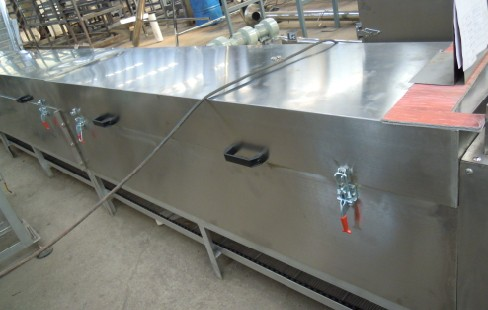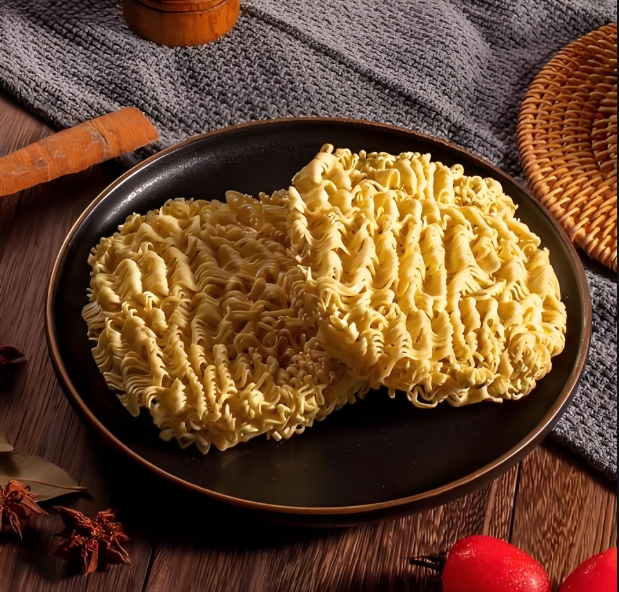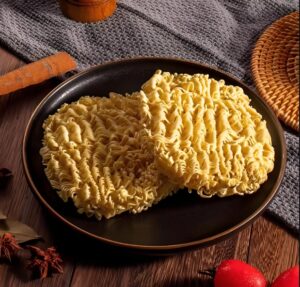<h1>How to Effectively Control Oil Temperature for Frying Instant Noodles</h1>
Introduction to Oil Temperature in Instant Noodle Production
Instant noodles are a global staple, produced through a process that includes frying to achieve their signature texture and extended shelf life. Controlling oil temperature during frying is essential for product quality, safety, and efficiency in manufacturing.
Instant noodle making machine
ToggleIn the fast-paced world of food production, even minor fluctuations in oil temperature can lead to uneven cooking, nutritional loss, or oil degradation. This article explores practical strategies for B2B professionals in the foreign trade sector to optimize oil temperature control.
By mastering these techniques, manufacturers can reduce waste, ensure compliance with international standards, and enhance their competitive edge in the global market.

The Importance of Precise Oil Temperature Control
Maintaining the right oil temperature is critical for frying instant noodles, typically ranging from 140°C to 180°C depending on the recipe. Too high a temperature can cause burning, while too low can result in soggy noodles and increased oil absorption.
For B2B exporters, consistent temperature control directly impacts product consistency, which is key to building trust with international buyers. Poor control can lead to recalls or rejected shipments, costing businesses time and money.
Additionally, energy efficiency improves with accurate temperature management, reducing operational costs and supporting sustainable practices in the food industry.
Understanding the Science of Oil Frying
The frying process involves heat transfer that rapidly removes moisture from the noodles, creating a crispy exterior. Oil temperature affects the rate of this moisture evaporation and the Maillard reaction, which enhances flavor and color.
Variations in oil composition, such as using palm or sunflower oil, can influence heat retention and frying outcomes. Manufacturers must account for these factors to achieve uniform results across batches.
From a chemical perspective, overheating oil produces harmful compounds like acrylamide, raising health concerns and regulatory issues in export markets.
Key Factors Influencing Oil Temperature
Several variables impact oil temperature during frying, including the volume of noodles, fryer design, and ambient conditions. High production volumes can cause temperature drops, necessitating quick adjustments.
The type of frying equipment also plays a role; continuous fryers maintain temperature more steadily than batch systems. Monitoring these factors helps prevent inconsistencies.
Environmental elements, like factory humidity, can alter oil behavior, making it essential for operators to adapt controls accordingly.
Methods for Effectively Controlling Oil Temperature
Implementing reliable methods for temperature control starts with selecting the right equipment. Digital thermostats and automated systems provide real-time monitoring and alerts for deviations.
In industrial settings, PID controllers are popular as they use feedback loops to maintain precise temperatures, minimizing human error and ensuring steady frying conditions.
Regular calibration of sensors is vital to avoid inaccuracies that could compromise product quality and safety standards.
Tools and Equipment for Temperature Management
Essential tools include infrared thermometers for quick spot checks and immersion probes for accurate readings in the oil bath. These devices help operators verify that the oil is at the optimal level before and during frying.
Advanced systems, such as PLC-based controls, integrate with production lines to automate temperature adjustments based on noodle load and frying duration.
For B2B traders, investing in high-quality equipment from reputable suppliers can lead to long-term savings and better compliance with global food safety regulations.
Step-by-Step Techniques for Temperature Regulation
Begin by preheating the oil to the target temperature, allowing time for even distribution. Use a gradual increase to prevent thermal shock, which can degrade oil quality.
During frying, monitor temperature continuously and adjust heat sources as needed. For example, reduce input if the oil exceeds the set point by more than 5°C.
After each batch, allow the oil to stabilize before proceeding, and perform routine tests to check for oil degradation, such as measuring free fatty acids.
Best Practices for Industrial-Scale Production
In B2B environments, integrating temperature control into a broader quality management system is key. This includes training staff on monitoring protocols and using data logging for traceability.
Adopt energy-efficient fryers that recover heat quickly, reducing downtime and supporting eco-friendly operations. This appeals to buyers focused on sustainability.
Collaborate with suppliers to source oils with high smoke points, ensuring they withstand frying temperatures without breaking down prematurely.
Overcoming Common Challenges in Temperature Control
One challenge is inconsistent raw materials, like varying noodle moisture levels, which can affect oil temperature. Standardizing inputs helps mitigate this issue.
Another is equipment maintenance; regular cleaning prevents residue buildup that could insulate heat and cause hotspots. Scheduled inspections are crucial.
For exporters, adapting to different regional standards, such as EU regulations on frying oils, requires flexible control systems that can handle varying parameters.
Frequently Asked Questions
Below, we address common inquiries from professionals in the instant noodle manufacturing sector.
What is the ideal oil temperature for frying instant noodles? The optimal range is 150°C to 170°C, but this can vary based on noodle thickness and desired texture. Always test with small batches to fine-tune.
How often should oil temperature be checked during production? Monitor continuously with automated systems, and perform manual checks every 15-30 minutes to ensure stability and catch any anomalies early.
What are the risks of not controlling oil temperature properly? Inadequate control can lead to product defects, increased oil usage, safety hazards like fires, and non-compliance with food safety standards, potentially affecting export certifications.
Can temperature control systems integrate with other factory automation? Yes, modern systems use IoT technology to connect with overall production lines, allowing for seamless data sharing and automated adjustments.
How does oil temperature affect the shelf life of instant noodles? Proper control minimizes oxidation and moisture retention, extending shelf life and preserving nutritional value, which is critical for international trade.
Conclusion
In summary, effective oil temperature control is a cornerstone of high-quality instant noodle production, enabling manufacturers to deliver consistent, safe products to global markets. By leveraging advanced tools, adhering to best practices, and addressing potential challenges, B2B professionals can enhance efficiency, reduce costs, and meet stringent regulatory requirements.
This approach not only boosts operational performance but also fosters long-term partnerships in the competitive foreign trade landscape. Prioritizing these strategies will help businesses thrive while maintaining the highest standards of quality and sustainability.









